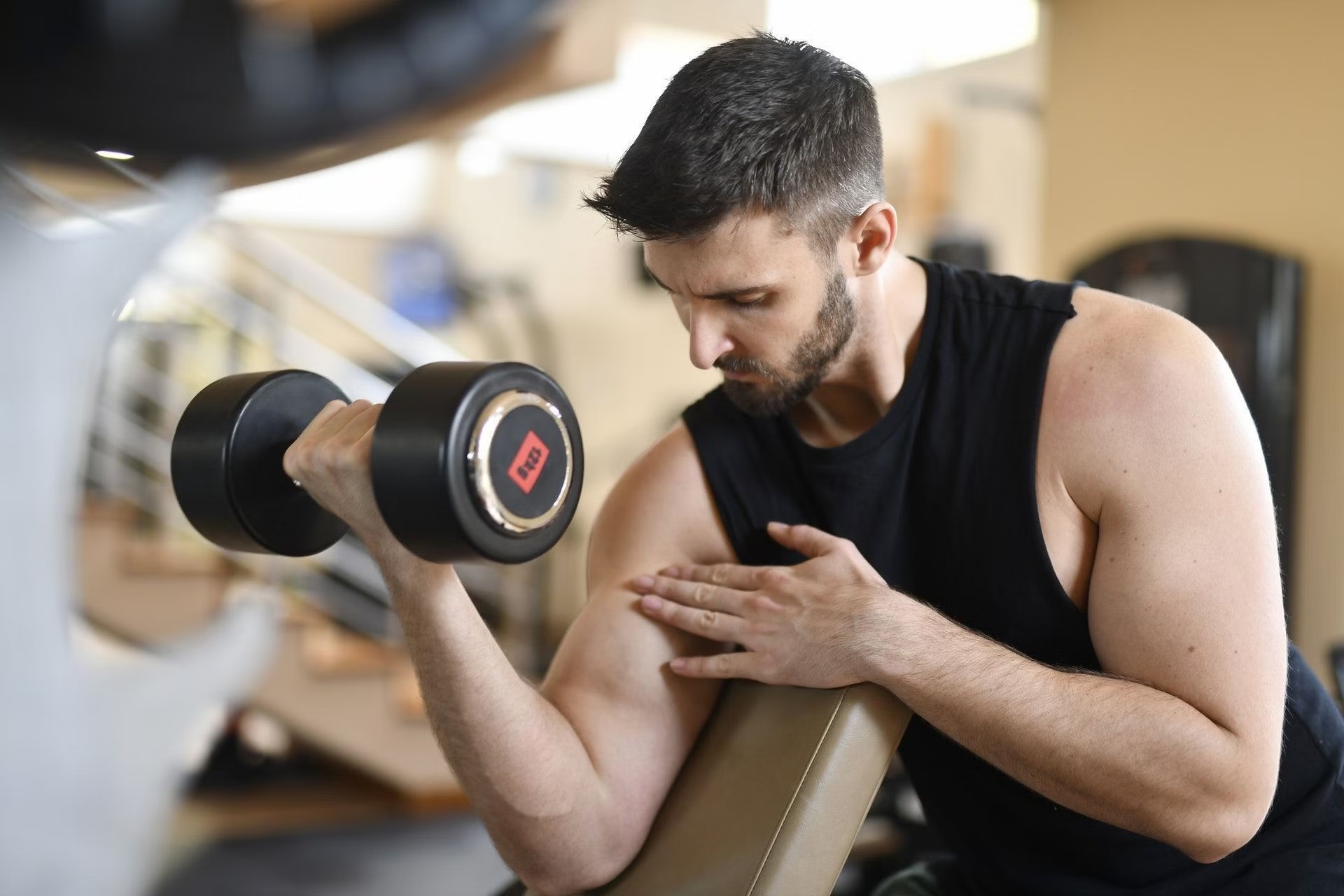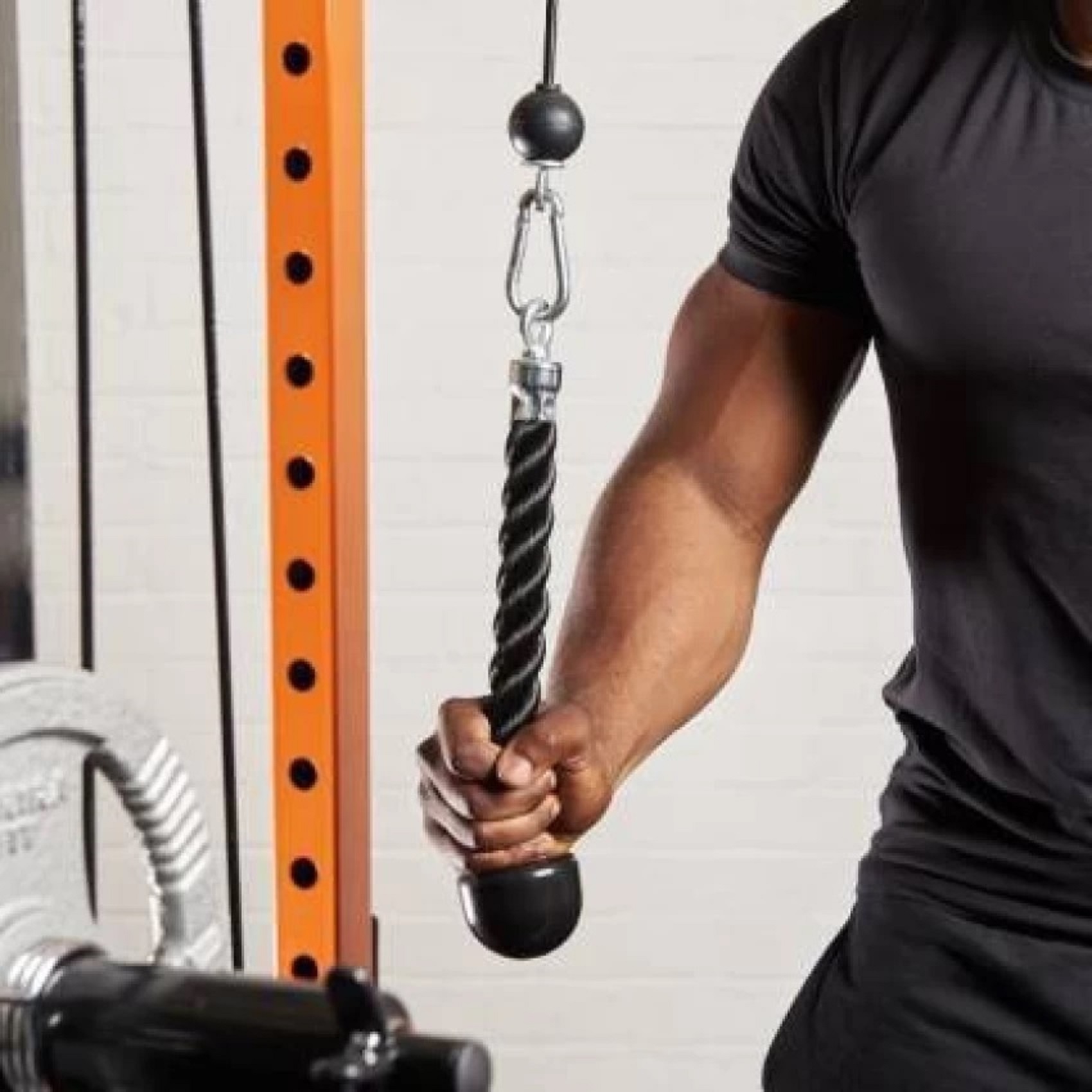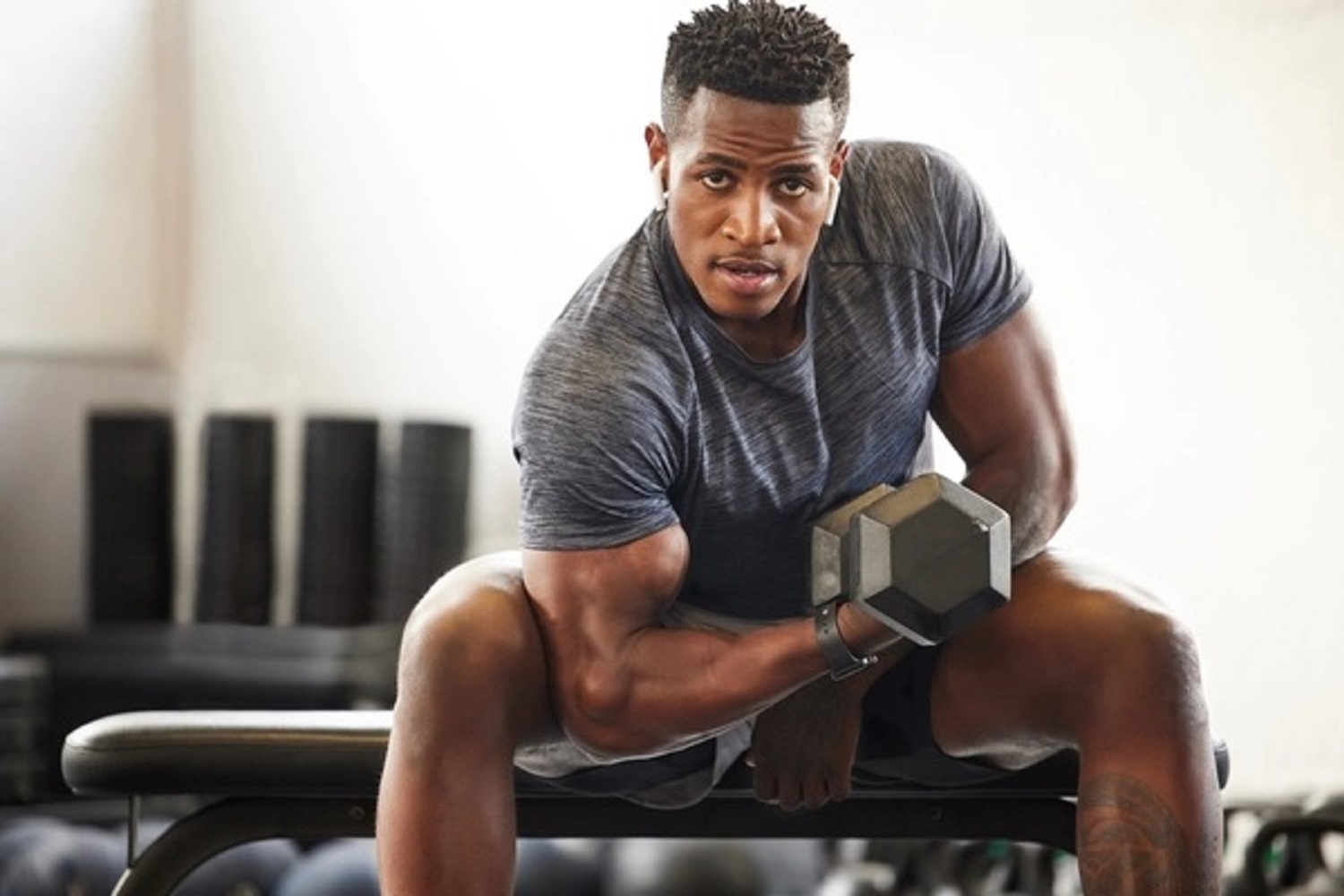Let us explore the diverse facets of arm training with the primary objective to give valuable insights and knowledge that can be advantageous for people seeking to improve their arm workouts.
The emphasis is on providing effective exercises for bicep and triceps development, exploring varied training approaches, and addressing challenges associated with arm training.
Wrist Flexibility: Key to Effective Barbell Curls
Let’s look at the primary mistake often associated with traditional barbell curls. Unlike the commonly debated topic of whether one should perform curls in the squat rack, a more nuanced concern arises concerning wrist flexibility.
- The critical aspect here is the challenge that people face in achieving the necessary suppleness in their wrists for smooth execution of barbell curls.
- The attempt to fully supinate the palms during the movement frequently results in discomfort, characterized by sensations of pain radiating through the wrists and forearms.
- While this issue may seem trivial at first glance, it assumes significance due to its impact on the mind-muscle connection.

- The discomfort experienced during the exercise can distract people from focusing on the crucial element—the connection with their biceps. Beyond being a distraction, physical discomfort has the potential to induce unintended alterations in the natural movement pattern.
- This alteration in biomechanics can have a cascading effect, ultimately undermining the effectiveness of the workout for bicep development.
- When individuals grapple with discomfort, there is a tendency to subconsciously modify their form to alleviate the pain, unintentionally compromising the targeted engagement of the biceps.
- Consequently, the exercise may not be executed along the optimal pathway, and the intended benefits for bicep development may be diminished.
- Therefore, addressing the issue of wrist flexibility is not merely about comfort during the exercise; it is a crucial consideration for maintaining the integrity of the movement pattern and ensuring the effectiveness of barbell curls in targeting and stimulating bicep growth.
Easy Bar Solution for Pain-Free Bicep Development
- To effectively address the challenge posed by limited wrist flexibility during barbell curls, a practical solution involves transitioning to the use of an easy bar.
- This specially designed barbell caters to people, who encounter difficulties in wrist flexibility. While conventional straight bar curls have been a staple in the repertoire of bodybuilders throughout history, the introduction of the easy bar proposes a potential shift in approach.
- If you notice an involuntary inward rotation of your wrists during straight bar curls, it serves as a clear indication that a modification is necessary.
- The easy bar presents a solution by allowing your wrists to maintain a more comfortable position throughout the entire exercise. Once equipped with this specialized barbell, the subsequent step involves tailoring your approach based on the specific head of the bicep you intend to target.

- For instance, if your goal is to emphasize the long head of the bicep, opting for a close grip on the easy bar might prove beneficial.
- On the contrary, adopting a wider grip could effectively target the short head of the bicep without introducing unnecessary stress. The key lies in experimentation, enabling you to discover the optimal grip and width that align with your specific bicep development goals. This approach ensures a lifting experience that is not only pain-free but also optimized for targeting and stimulating the desired aspects of bicep growth.
Optimizing Bicep Workouts: Shoulder-Friendly Techniques
- Effectively addressing challenges related to the shoulders during bicep workouts involves a strategic approach through the incorporation of unilateral dumbbell or cable exercises.
- When the limitation is not primarily rooted in the wrists or forearms but rather originates from the shoulders themselves, people often struggle to maintain proper elbow positioning, leading to inadvertent elbow flaring during exercises.
- To overcome this limitation and ensure optimal shoulder positioning, a practical solution is to secure the triceps onto a preacher curl bench or the incline of a bench. This strategic placement helps stabilize the shoulders and creates a more controlled and ergonomic movement pattern.

- By providing additional support to the triceps, this approach minimizes the chances of shoulder-related discomfort or strain during bicep exercises.
- With the shoulders stabilized, individuals can then focus on selecting exercises that specifically target distinct regions of the bicep. For example, choosing variations that emphasize the long or short head of the bicep allows for a more nuanced and tailored workout. This customization enables individuals to align their exercise routine with personal preferences and specific bicep development goals.
- By isolating and addressing shoulder-related challenges in this manner, people not only ensure a more comfortable and pain-free bicep workout but also optimize muscle engagement for effective growth.
- This detailed and strategic approach enhances the overall effectiveness of the workout routine, contributing to a more targeted and efficient bicep training session.
Mastering Triceps: Unilateral Rope Techniques
- Addressing the lateral head of the triceps presents a nuanced challenge, particularly when utilizing a rope attachment for exercises.
- A common misconception arises when individuals assume that the choice of equipment alone, such as using a rope, is sufficient for targeting the lateral triceps head. However, the intricate relationship between the shoulders and arms plays a crucial role in the effectiveness of triceps exercises.
- When employing a rope attachment with both hands, a notable limitation emerges concerning the internal or external rotation capacity within the shoulders.
- This limitation becomes particularly evident unless a longer rope is available, or individuals commit to performing the exercise unilaterally. In this scenario, the range of motion becomes compromised due to the fixed grip width. While the use of both hands may provide a sense of stability, it may not allow for optimal triceps engagement, hindering the effectiveness of the workout.
- Contrastingly, opting for a single-arm approach may initially seem less exhilarating, as it involves reduced weight usage and lacks the audible impact of weights colliding. However, this approach offers a distinct advantage by allowing for exaggerated shoulder rotation during the movement.

- This enhanced rotation not only facilitates a fuller range of motion but also intensifies the engagement of the lateral triceps head, addressing the nuanced challenge of targeting this specific area for comprehensive triceps development.
Optimizing Concentration Curls for Bicep Growth
- Ensuring proper shoulder engagement is crucial, even in seemingly innocuous exercises like concentration curls, where a common mistake lies in underestimating the potential risks associated with the movement.
- Many individuals may incorrectly assume that merely placing their elbow on the knee guarantees a successful workout, often leading them to choose the heaviest available weight without considering the intricate dynamics of the exercise.
- The critical issue arises when you neglect the importance of the bicep actively resisting the weight during the eccentric phase of the concentration curl. This neglect can result in the shoulder taking over the movement, leading to suboptimal targeting of the intended muscle group and an increased risk of strain or injury.
- To address this challenge, two essential adjustments can be made.
- Firstly, slightly widening the stance during concentration curls serves to shorten the range of motion. This adjustment effectively secures the shoulder in a locked position, prioritizing and emphasizing the engagement of the bicep throughout the exercise.
- By limiting the shoulder’s involvement, you can ensure that the bicep is the primary driver of the movement, promoting more targeted and effective muscle activation.

- Alternatively, opting for a lighter weight is a prudent strategy to ensure proper form and mitigate the risk of shoulder interference. By choosing a weight that allows for controlled and deliberate movements, you can focus on maximizing bicep activation while minimizing strain on the shoulder joint.









